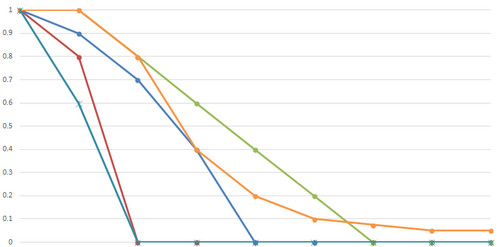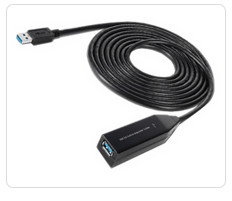Industrial Cameras, Industrial Imaging and Machine Vision - Wholesale Distributor - Aegis Electronic Group
How Does A USB Range Extender Work
Anyone needing a USB cord longer than ten feet may have asked the question, “How does a USB extender work?” Few people know that USB cables were not designed to be longer than 16 feet. USB camera placement can easily exceed that restriction. So can industrial automation, surveillances or sensor monitoring applications.
Why does a USB cord need to be extended
 The USB cord carries both electrical power and data. The laws of nature enforce a decay of quality over distances on both power and data. That natural law is measured by impedance, or resistance. The effect is that 5 volts at the beginning will no longer be 5 volts forty feet away. Therefore, engineering the materials within the USB cord seeks to ensure 100% reliable power and data quality within sixteen feet.
The USB cord carries both electrical power and data. The laws of nature enforce a decay of quality over distances on both power and data. That natural law is measured by impedance, or resistance. The effect is that 5 volts at the beginning will no longer be 5 volts forty feet away. Therefore, engineering the materials within the USB cord seeks to ensure 100% reliable power and data quality within sixteen feet.
That engineering standard was set by a cooperative agreement between Microsoft, Hewlett-Packard, Intel, Lucent, NEC and Phillips. They created a cable standard that would be guaranteed to work between computers and peripherals. They designed a cord that would both power the peripheral and supporting data transfer rates up to 480 megabyts per second.
What Does A USB Extender Do
USB Extenders counteract the natural decay of power and data quality. They boost the voltage back up into the range of engineering standards. They ensure a USB peripheral functions correctly at a distance from the host computer. Modern USB Extenders can use self-powered cables (USB 3.0), a series of hubs, or converting the signal back and forth from CAT5 (or CAT6).
How Many Meters Can USB Cable Extender Be
There are basically three types of USB extenders The length of the use case influences which type of extender to use:
- If less than 5 meters (about 16 feet), a simple extension cable.
- If less then 25 meters (about 82 feeet), then a series of hubs
- Beyond 25 meters, then a CAT5 Extender system.
3 Types of USB Extenders
 The USB extension cable can extend the reach of a short (3 or 6 feet) USB cord up to the maximum 16 feet. They have a female/male connector that simply plugs into the root USB cable.
The USB extension cable can extend the reach of a short (3 or 6 feet) USB cord up to the maximum 16 feet. They have a female/male connector that simply plugs into the root USB cable.
 Using the hub method to extend the reach up to 75 feet may require wall power. The hubs have to counteract decaying voltage. Therefore they typically have to be plugged in to standard 110v wall outlets. These are called powered hubs. It is possible to use non-powered hubs. But there is a risk of signal and power decay. Which could result in the peripheral not functioning correctly. Therefore alternating a powered hub every other point in the series of hubs may be appropriate.
Using the hub method to extend the reach up to 75 feet may require wall power. The hubs have to counteract decaying voltage. Therefore they typically have to be plugged in to standard 110v wall outlets. These are called powered hubs. It is possible to use non-powered hubs. But there is a risk of signal and power decay. Which could result in the peripheral not functioning correctly. Therefore alternating a powered hub every other point in the series of hubs may be appropriate.
 The longest reach of a USB peripheral can be accomplished by using a CAT5 Extender system. Basically a converter changes the USB signal into a CAT5 type at the peripheral then decodes it back to USB at the host computer. This is accomplished by running a CAT5 cable between the “converter” box at the peripheral and the “decoder” box at the host computer. The “decoder” box reverts the CAT5 data signal back into a USB type. Thus allowing the host computer to interact with the USB signal in its native form.
The longest reach of a USB peripheral can be accomplished by using a CAT5 Extender system. Basically a converter changes the USB signal into a CAT5 type at the peripheral then decodes it back to USB at the host computer. This is accomplished by running a CAT5 cable between the “converter” box at the peripheral and the “decoder” box at the host computer. The “decoder” box reverts the CAT5 data signal back into a USB type. Thus allowing the host computer to interact with the USB signal in its native form.
USB Extenders For Industrial Imaging & Surveillance
Industrial imaging, video surveillance and security camera systems often incorporate USB extenders. Their environments can easily exceed the USB limitation of 3 meters. Knowing how USB extenders work will ensure 100% data quality is delivered from the a USB camera over extended distances.

